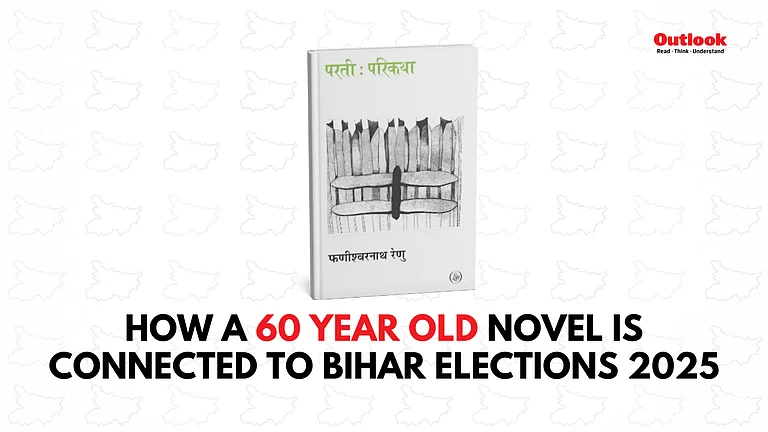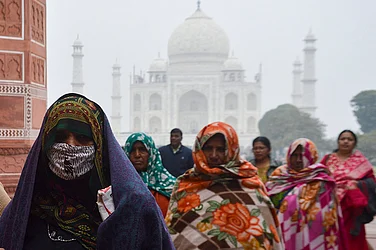In 2020-21, the farmers mounted the biggest challenge to the Narendra Modi government and forced it to withdraw the three farm laws. While the agitating farm unions celebrated the repeal of the three laws, the Opposition politicians backing them were in for a surprise as the success of the protests did not translate into electoral setbacks to the Bharatiya Janata Party (BJP) in the 2022 Uttar Pradesh assembly elections.
Just months after Prime Minister Narendra Modi announced that the Union government had repealed the three laws that the farmers were protesting against, the BJP returned to power in UP with an increased vote share. Moreover, the party largely retained the West UP — one of two hubs that drove the yearlong farmers’ agitation, with the other being Punjab.
Of the 65 assembly seats in West UP, the BJP won 48 and setbacks were limited just to a small cluster of districts.
Since the 2022 UP assembly elections, the BJP has also won assembly elections in Rajasthan, Madhya Pradesh, and Chhattisgarh, and has secured power in Bihar in an alliance with Nitish Kumar of the Janata Dal-United (JD-U) who quit the INDIA bloc to join the BJP-led National Democratic Alliance (NDA).
Farmers’ Protests’ Effect In West UP Elections
The yearlong farmers’ movement in 2020-21 was driven primarily by protesters from Punjab and Western Uttar Pradesh — the two farming hubs of North India and historic centres of farm-related mobilisation. In the past, West UP has seen the farmer-centric movement by the likes of yesteryears’ greats Mahendra Singh Tikait and Chaudhary Charan Singh.
While there were expectations that the farmers’ protests would lead to a region-wide backlash to the BJP, it did not happen. Of the 65 assembly seats in the region, the BJP had won 59 in 2017. In 2022, defying the expectations, the party retained 48 of those seats.
As per an analysis of the 2022 UP assembly election results, the BJP only suffered defeats in a sliver of the Jat belt of Meerut, Muzaffarnagar, and Saharanpur districts. Contrary to the popular perception that the Samajwadi Party (SP) benefitted from the farmers’ movement in the region, it was the Rashtriya Lok Dal (RLD) that flipped most of these BJP-held seats in the 2022 polls.
Of the 11 seats that the BJP lost in the region, RLD flipped six: three in Muzaffarnagar, two in Shamli (carved out of Muzaffarnagar in 2011), and one in Meerut. Similarly, the SP flipped four of the BJP-held seats: one in Muzaffarnagar, two in Meerut, and one in Saharanpur.
Elsewhere in the Jat-dominated areas of West UP —Agra, Baghpat, and Mathura— the BJP retained its seats comfortably.
Such an electoral performance in the region foiled the plans of BJP’s opponents to ride on the back of farmers’ agitation. The rise of the farmers as an electoral bloc against the BJP could not take place and the answer has been sought in a fundamental misunderstanding of the farmers’ social organisation in the region. While the farmers can rise as a sociopolitical force, they are not an electoral bloc yet — have never been one.
Why Farmers Are Not Electoral Bloc
The 2020-21 farmers’ movement from West UP was primarily driven by the Jat community, which is deeply rooted in agriculture in the region. It was represented in the rank and file of the protesters and their leaders — Bharatiya Kisan Union’s (BKU) Tikait brothers were the foremost leaders of the protests.
The Jats, however, have never voted as a bloc — much like the farmers at large in the region. While a section of the Jats and the farmers in the region have had a historic affinity with the Rashtriya Lok Dal (RLD), a party of Jats and farmers, a large chunk of the Jats and farmers of the region has gone with the BJP since 2014.
The BJP did not see any significant electoral reversals in West UP because the farmers are not an electoral bloc at all, says social historian and cultural anthropologist Badri Narayan, who emphasises that farmers have a multitude of identities other than that of their profession.
“The farmers can be a sociopolitical force, but they are not an electoral bloc. The farmers’ protest was an economic movement related to their profession, but it did not determine their votes. The votes are determined by factors like the pre-existing political affiliation of the farmers, their caste, or their religion. The labourers and farmers have never been electoral blocs in India but have always voted based on a multitude of factors like caste or religion,” says Narayan, Professor and Director, GB Pant Social Science Institute, Allahabad.
In identifying farmers as an electoral bloc, observers also make an incorrect reading of the region’s polity. The name of Chaudhary Charan Singh is often invoked while calling for an electoral mobilisation of farmers. While Charan Singh was indeed a lifelong farmer leader, he became the Prime Minister of India and Chief Minister of UP not because of a farmers’ electoral mobilisation but because of the mobilisation of other backward classes (OBCs). It was again caste —Charan Singh is the foremost Jat leader of India— that played a key role.
“Charan Singh emerged as the leader of the OBCs and that’s how he rose politically. He did not become chief minister or the prime minister on the back of farmers’ movements but on the back of the consolidation of the OBCs as a bloc. Politically, he was an OBC leader, not just a farmer leader,” says Kaviraj, a veteran observer of UP’s politics.
Kaviraj adds that, in the present context, a farmer votes as a Hindu, Muslim, Dalit, or Jat but not as a farmer because a farmer is not his main identity. “Once the farmers return from protest sites, they go back to being part of their caste or religious blocs. They cease to primarily identify as farmers and therefore vote as per their caste or religion. If farmers were a bloc, then the BJP would have suffered massively across West UP in 2022 but that did not happen as farmers are not an electoral bloc,” says Kaviraj, Professor, Department of Political Science, University of Lucknow.
Caste’s Primacy In Farm Movements Of North India
The Bharatiya Kisan Union (BKU) led by the Tikait family and the Rashtriya Lok Dal (RLD) led by Jayant Singh, the grandson of Charan Singh, remain the foremost political entities associated with farmers in the region.
While RLD —and its predecessor Bharatiya Lok Dal (BLD) and Jana Congress floated by Charan Singh— have found some political successes over the years, the BKU has not managed to succeed electorally and has remained largely a farmer pressure group or as a social organisation of the Jats at best rooted in the ‘khap’ system of the region. It is to not say that the BKU has not played a political role over the years.
In a chapter in the ‘New Farmers’ Movements in India’ (1995), Swedish sociologist Staffan Lindberg noted that there were strong indications at the time that the “farmers’ movements played an important role in the overthrow of the Rajiv Gandhi government in the 1989 general elections”.
“In Uttar Pradesh and Haryana, for example, the BKU worked decisively for the National Front opposition, which won an almost complete victory over the Congress,” noted Lindberg, further mentioning the pressure group tactics of the farmers’ agitation at the time.
Lindberg further noted, “There are, however, also many other signs that today almost all political parties have been affected by farmers’ agitations, at least on the level of rhetoric. When the new Congress government tried to increase fertiliser prices 40 per cent in July 1991, there was such massive opposition from all political parties that the proposal had to be changed drastically. Similarly, when the same government decided to import wheat in 1992 to keep prices down, it also resulted in countrywide protests by the peasant movements and opposition parties.”
Such a role, however, suits a political pressure group instead of an electoral bloc. The other force associated with farmers in the region, Charan Singh, rose on the back of the consolidation of the other backward classes (OBCs) and the anti-Congress politics of the time. In 1967, he broke away from Congress after over four decades of association and floated a new party, Jana Congress, and became the CM of UP as a leader of the ‘Samyuka Vidhayak Dal (SVD)’, a group so disparate that it comprised both the CPI (M) and the Bharatiya Jana Sangh (BJS).
After serving two brief chief ministerial terms in 1967-68 and 1970, Charan Singh briefly became the Prime Minister of India in 1979-80 in the post-Emergency era. The anti-Congress sentiment prevailing at the time and the OBC consolidation worked in his favour. In UP, the non-Congress parties contested in 1977 under the umbrella of the Janata Party and won 352 of 425 seats, of which Charan Singh’s BLD contributed 156.
In his book ‘From Lucknow to Lutyens: The Power and Plight of Uttar Pradesh’, Abhigyan Prakash noted that while Charan Singh projected himself as a farm leader, he “tried to subsume caste identities into a feeling of class (peasant) identity to give his outfit the flavour of a peasant movement”. Then, Charan Singh’s BKD grew on the back of the consolidation of the backward classes, the further sociopolitical rise of the Jats, and the missteps of the Congress party.
“The Jats of western UP and Haryana grew wealthy, thanks to the increase in sugarcane production resulting from the extensive programmes in the framework of the Green Revolution. As these middle-level farmers asserted themselves, the overwhelming presence of Jats among them largely explained the growing success of Charan Singh’s politics in UP in the 1960s. In this way, Charan Singh was able to use caste as an important tool of political mobilisation,” noted Prakash.
Prakash further noted, “The BKD also tried to mobilise the backward castes by emphasising their position in the caste hierarchy and their distinct economic interests, and on this basis claimed proportional representation for them in politics. It tried to identify the Congress party as the government that served the interests of the upper castes and industrialists. This rhetoric seemed to appeal to the backward classes as they saw the party as countering upper-caste dominance.”

























